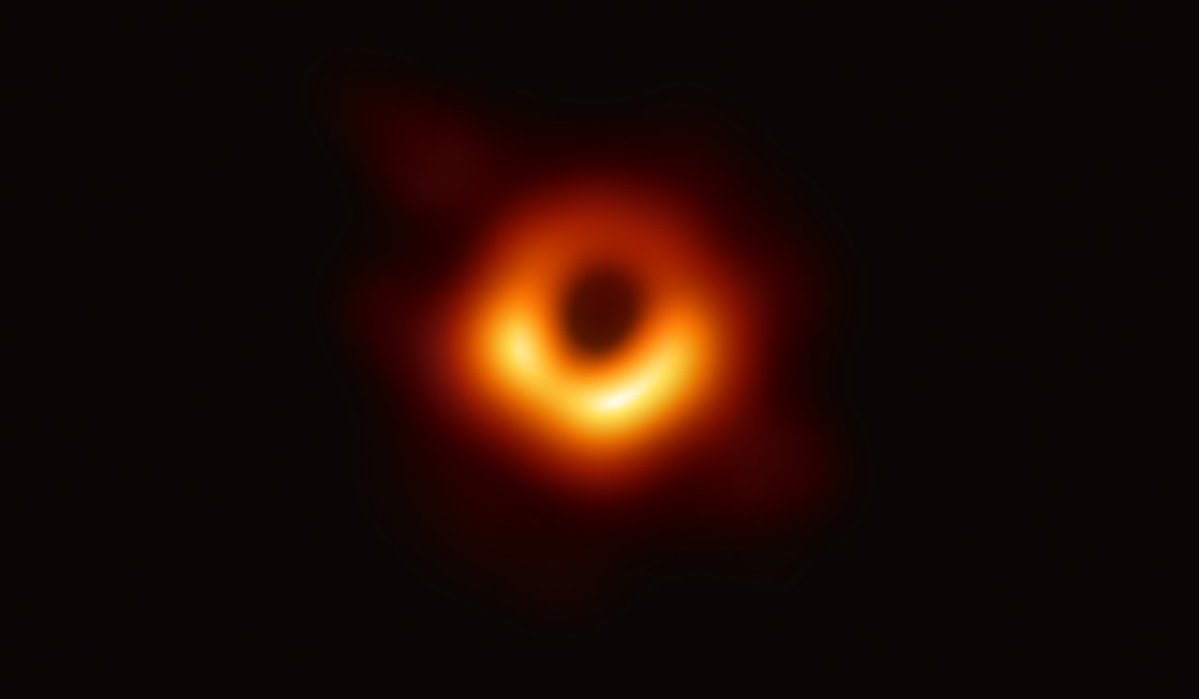According to an announcement Wednesday morning by researchers at the National Science Foundation, scientists used a global network of telescopes to see and capture first-ever image of a black hole. The image, seen above, is a supermassive black hole and its shadow at the center of a galaxy known as M87. Details about the black hole were published today in Astrophysical Journal Letters.
The black hole measures 40 billion km across, which is three million times the size of Earth. It has been described by scientists as “a monster.” This is the first direct visual evidence we’re seeing that a black hole exists, researchers say. The image shows a bright “ring of fire” and surrounding a perfectly circular dark hole. The halo seen in the picture is caused by superheated gas falling into the hole.
The galaxy, called Messier 87 or M87, is massive, to say the least. It’s near the Virgo galaxy cluster 55 million light-years away from our planet Earth. It has a mass that is 6.5 billion times that of our sun. To put it another way, it’s larger than the orbit of Neptune, which takes 200 years to make one orbit around our sun.
“We have seen what we thought was unseeable,” said Sheperd Doeleman, director of the Event Horizon Telescope Collaboration. “We have seen and taken a picture of a black hole.”
What is a black hole?
A black hole is a region of space from which nothing can escape from its gravity. While the name is called black hole, they are not empty. Instead, they consist of huge amount of matter packed densely into a small area, according to NASA. A region beyond the black hole exists called the event horizon. It’s called “point of no return,” from where it’s impossible to escape the gravitational effects of the black hole.
What are experts saying?
“If immersed in a bright region, like a disc of glowing gas, we expect a black hole to create a dark region similar to a shadow — something predicted by Einstein’s general relativity that we’ve never seen before,” said Heino Falcke, chair of the EHT Science Council. “This shadow, caused by the gravitational bending and capture of light by the event horizon, reveals a lot about the nature of these fascinating objects and allowed us to measure the enormous mass of M87’s black hole.”
“Once we were sure we had imaged the shadow, we could compare our observations to extensive computer models that include the physics of warped space, superheated matter and strong magnetic fields. Many of the features of the observed image match our theoretical understanding surprisingly well,” said Paul T.P. Ho, EHT Board member and director of the East Asian Observatory. “This makes us confident about the interpretation of our observations, including our estimation of the black hole’s mass.”
“Black holes have sparked imaginations for decades,” said National Science Foundation director France Córdova. “They have exotic properties and are mysterious to us. Yet with more observations like this one they are yielding their secrets. This is why NSF exists. We enable scientists and engineers to illuminate the unknown, to reveal the subtle and complex majesty of our universe.”





